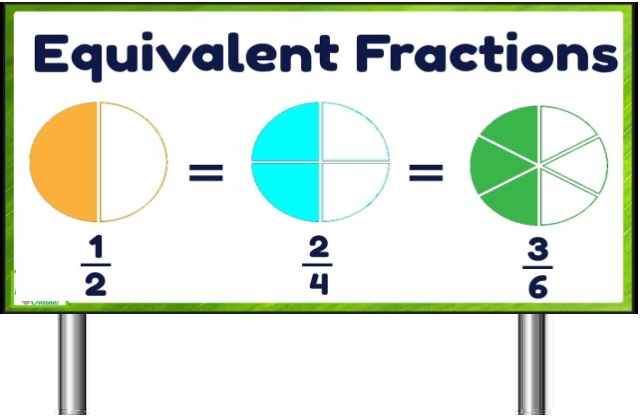The Periodic Table Exe-5A Chemistry Class-9 ICSE Selina Publishers Solutions Chapter-5. Step By Step ICSE Selina Concise Solutions of Chapter-5 The Periodic Table with All Exercise including MCQs, Very Short Answer Type, Short Answer Type, Long Answer Type, Numerical and Structured/Application Questions Solved . Visit official Website CISCE for detail information about ICSE Board Class-9.
The Periodic Table Exe-5A Chemistry Class-9 ICSE Concise Selina Publishers
| Board | ICSE |
| Publications | Selina Publication |
| Subject | Chemistry |
| Class | 9th |
| Chapter-5 | The Periodic Table |
| Book Name | Concise |
| Topics | Solution of Exercise – 5A |
| Academic Session | 2023-2024 |
A. Exercise – 5A
The Periodic Table Class-9 Chemistry Concise Solutions
Page-87
Question 1.
What is the need for classification of elements?
Answer:
It is impossible for a chemist to study all the elements and their compounds. Hence, classification is a must.
Following are the reasons for the classification of elements:
To study elements better
To correlate the properties of the elements with some fundamental properties which are characteristic of all the elements
To reveal relationships between elements
Question 2.
What was the basis of the earliest attempts made for classification and grouping of elements?
Answer:
The first classification of elements was into 2 groups-metals and non-metals.
Question 3.
(a) A, B and C are the elements of a Dobereiner’s triad. If the atomic mass of A is 7 and that of C is 39, what should be the atomic mass of B?
(b) Why was Dobereiner’s triad discarded?
Answer:
(a)
At. wt. of A = 7, At. wt. of C = 39
![]()
At. wt. of B = 23
i.e. Average of weights of A and C.
(b)
Döbereiner failed to arrange all the known elements in the form of triads.
In the triad of fluorine (19), chlorine (35.5) and bromine (80), it is observed that the mean of the atomic masses of fluorine and bromine is ½(19 + 80) = 49.5, not 35.5.
Question 4.
Explain ‘Newland’s Law of Octaves.’ Why was the law discarded?
Answer:
Elements when arranged in the increasing order of their atomic weights are similar to the eighth and the first note of the musical scale. For example, the eighth element from lithium is sodium. Similarly, the eighth element from sodium is potassium. Thus, lithium and sodium provide any specific place for hydrogen.
This classification did not work with heavier elements.
Newland adjusted two elements Cobalt (Co) and Nickel (Ni) in the same slot.
Fe, which resembles Co and Ni in properties, has been placed far away.
Question 5.
Did Dobereiners triads also exist in the columns of Newland’s Octaves? Compare and find out.
Answer:
Yes, Döbereiner’s triads also exist in the columns of Newland’s octaves. For example, the second column of Newlands classification has the elements Lithium (Li), Sodium (Na) and Potassium (K), which constitute a Döbereiner’s triad.
Question 6.
(a)Lithium, sodium and potassium elements were put in one group on the basis of their similar properties. What are those similar properties?
(b) The elements calcium, strontium and barium were put in one group or family on the basis of their similar properties.
What were those similar properties?
Answer:
(a)
Elements of lithium, sodium and potassium have the following similar properties:
All these have one electron in the outermost shell.
They form unipositive ions.
These are good reducing agents. are soft metals.
They impart colour to the flame.
Common name of the group is alkali metals [Group 1A].
(b)
All of them are metals.
Oxide of each of them is alkaline in nature.
Each has valency 2.
Question 7.
(a) What was Mendeleev’s basis for classification of elements?
(b) Mendeleev’s contributions to the concept of periodic table laid the foundation for the Modern Periodic Table. Give reasons.
Answer:
(a)
Mendeleev’s basis for periodic classification:
Similarities in the chemical properties of elements.
Increasing order of atomic weights of elements.
(b). Mendeleev’s contributions to the concept of periodic table
Mendeleev laid the foundation for the modern periodic table by showing periodicity of the properties of the elements by arranging the elements (63) then known into 8 groups, by leaving gaps for undiscovered elements and predicting their properties. He made separate groups for metals and non-metals. He also created periods in which the element gradually changes from metallic to non-metallic character. He was also able to show that the element in the same sub-group had the same valency.
Question 8.
State Mendeleev’s periodic law.
Answer:
Mendeleev’s periodic law: The physical and chemical properties of all the elements are a periodic function of their atomic masses.
Question 9.
Use Mendeleev’s Periodic Table to predict the formula of
(a) hydrides of carbon and silicon.
(b) oxides of potassium, aluminium and barium.
Answer:
(a)
C is in Group 4. So, the hydride will be CH4 (Methane).
Si is in Group 4. So, the hydride will be SiH4 (Silane)
(b)
.K is in Group 1. So, the oxide will be K2O (Potassium oxide).
Al is in Group 3. So, the oxide will be Al2O3 (Aluminium oxide).
Ba is in Group 2. So, the oxide will be BaO (Barium oxide).
Question 10.
Which group of elements was missing from Mendeleev’s original periodic table?
Answer:
Anomalous pairs of elements were missing from Mendeleev’s periodic table.
Question 11.
State the merits of Mendeleev’s classification of elements.
Answer:
Merits of Mendeleev’s classification of elements:
Grouping of elements
Gaps for undiscovered elements: Mendeleev left some gaps in his periodic table for subsequent inclusion of elements not known at that time.
He predicted the properties of the then unknown elements on the basis of properties of elements lying adjacent to the vacant slots (eka-aluminium and eka-silicon).
Question 12.
Why did Mendeleev’s leave some gaps in his periodic table os elements? Explain your answer with an example.
Answer:
Mendeleev’s left gaps in the table for the undiscovered elements. He discovered the properties of such elements with the help of neighboring elements.
and He discovered eka-silicon with atomic mass of 72 which was later named Germanium with atomic mass 72.6.
Question 13.
The atomic number of an element is more important to the chemist than its relative atomic mass. Why?
Answer:
Henry Moseley found that when cathode rays struck anodes of different metals, the wavelength of these metals was found to decrease in a regular manner of changing the metal of anode in the order of its position in the periodic table. By this, he concluded that the number of positive charges present in the nucleus due to protons (atomic number) is the most fundamental property of the element.
So, Henry Moseley found that the atomic number is a better fundamental property of an element compared to its atomic mass. This lead to the modern periodic law.
This law gave explanations for anomalies in Mendeleev’s classification of elements such as
Position of isotopes with the same atomic number can be put in one place in the same group.
Position of argon and potassium: Potassium with higher atomic number should come later, and argon with lower atomic number should come first.
Question 14.
Consider the following elements: Be, Li, Na, Ca, K. Name the elements of (a) same group (b) same period.
Answer:
| Element | At. No. | Electronic distribution |
| Be | 4 | 2, 2 |
| Li | 3 | 2, 1 |
| Na | 11 | 2, 8, 1 |
| Ca | 20 | 2, 8, 8,2 |
| K | 19 | 2, 8, 8, 1 |
Same IA group (Li, Na, K) and IIA group (Be, Ca)
In the second period (Be, Li) and in the fourth period (K, Ca)
Question 15.
(a) Name an element whose properties were predicted on the basis of its position in Mendeleev’s periodic table.
(b) Name two elements whose atomic weights were corrected on the basis of their positions in Mendeleev’s periodic table.
(c) How many elements were known at the time of Mendeleev’s classification of elements?
Answer:
(a) Eka-silicon
(b) Gold and Platinum
(c) Only 63 elements were discovered at the time of Mendeleev’s classification of elements
— : End of The Periodic Table Exe-5A Answer Class-9 ICSE Chemistry Solutions :–
Return to Return to Concise Selina ICSE Chemistry Class-9
Thanks
Please share with your friends




